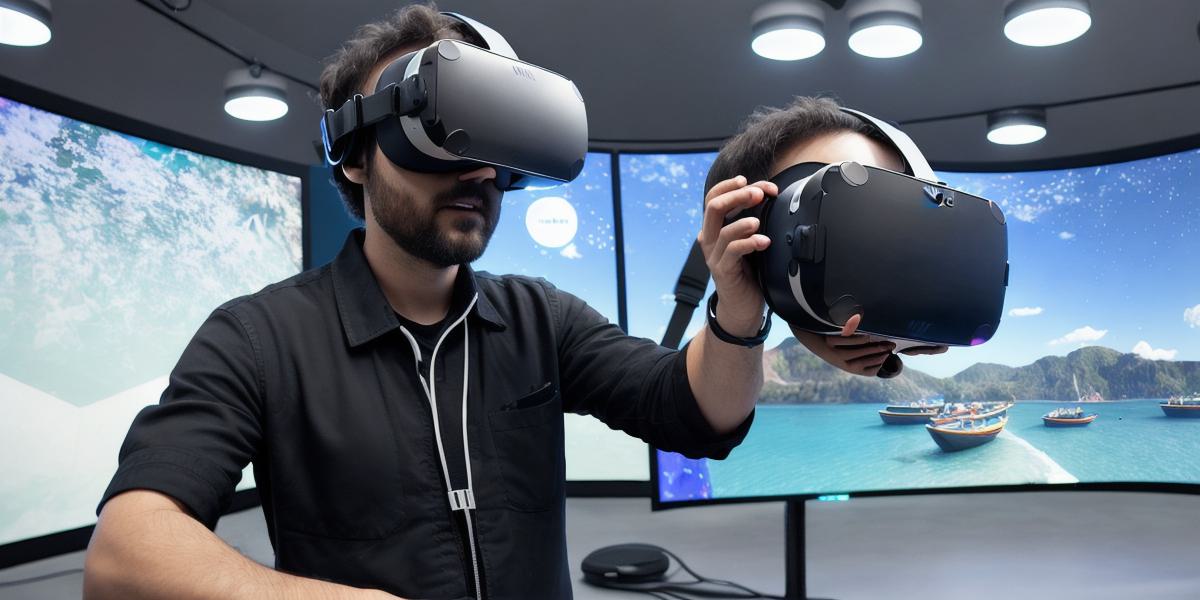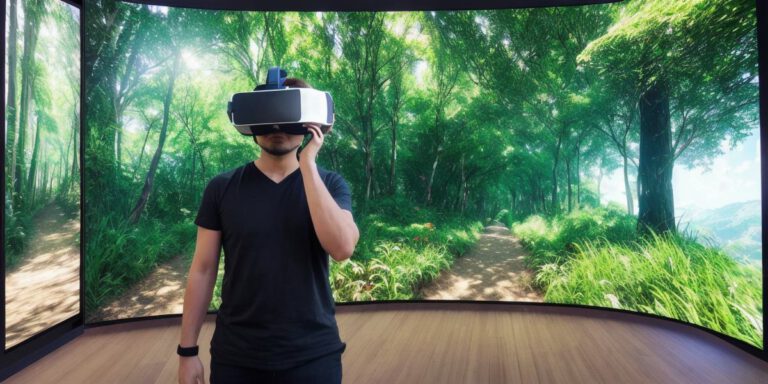The Ultimate Guide to Virtual Reality: Features, Advantages, and Future Applications

Virtual reality (VR) is a rapidly growing technology that has already transformed several industries, including gaming, entertainment, and healthcare. In this comprehensive guide, we will explore the features, advantages, and future applications of virtual reality, as well as how it is being used in various fields to enhance the user experience and improve efficiency.
Understanding Virtual Reality
Virtual reality technology involves creating an immersive and interactive environment that simulates a real-world experience. This is achieved through the use of specialized headsets, sensors, and other devices that track the user’s movements and provide them with a sense of presence in a virtual world. The most common form of VR is Oculus Rift, but there are several other options available, including HTC Vive, PlayStation VR, and Samsung Gear VR.
Features of Virtual Reality
Virtual reality technology has several key features that make it unique and different from traditional media such as TVs or computers. These include:
1. Immersion
Virtual reality provides a fully immersive experience, with the user feeling like they are actually in the virtual world. This is achieved through the use of specialized headsets that track the user’s movements and provide them with a sense of presence in the virtual world.
2. Interactivity
Virtual reality allows users to interact with the virtual environment in a natural way, using hand gestures or specialized controllers to perform actions. This makes it an ideal platform for games, simulations, and other interactive experiences.
3. Customization
Virtual reality technology is highly customizable, allowing users to create their own virtual environments and experiences. This makes it ideal for education, training, and other applications where users need to simulate real-world scenarios.
Advantages of Virtual Reality
Virtual reality technology has several key advantages that make it an attractive option for businesses and organizations across a range of industries. These include:
- Enhanced Training and Education
Virtual reality provides a safe and controlled environment for users to practice skills and knowledge without the risk of injury or damage to equipment. This makes it an ideal platform for training and education, particularly in industries such as healthcare and manufacturing where safety is paramount.
2. Improved Efficiency
Virtual reality technology can help businesses and organizations improve efficiency by allowing users to simulate real-world scenarios in a virtual environment. This enables them to identify and address potential issues before they arise in the real world, saving time and resources.
3. Enhanced Customer Experience
Virtual reality technology can be used to create highly immersive and engaging customer experiences, particularly in industries such as retail and hospitality. By providing users with a virtual tour of a product or service, businesses can enhance the user experience and increase sales.
Future Applications of Virtual Reality
Virtual reality technology is still in its early stages, but it has already shown great potential for a range of applications. Some of the most promising future applications include:
1. Healthcare
Virtual reality technology can be used to create highly immersive and engaging healthcare experiences, particularly in areas such as pain management and rehabilitation. By providing users with a virtual environment that simulates real-world scenarios, healthcare providers can improve patient outcomes and reduce costs.
2. Real Estate
Virtual reality technology can be used to provide users with a highly immersive and engaging real estate experience. By allowing users to virtually tour properties and visualize changes and improvements, real estate agents and buyers can save time and resources and make more informed decisions.
- Travel and Tourism
Virtual reality technology can be used to create highly immersive and engaging travel experiences, particularly in areas such as virtual tours of museums, art galleries, and other cultural attractions. By providing users with a virtual experience, businesses can enhance the user experience and increase sales.

FAQs
- What is virtual reality?
Virtual








